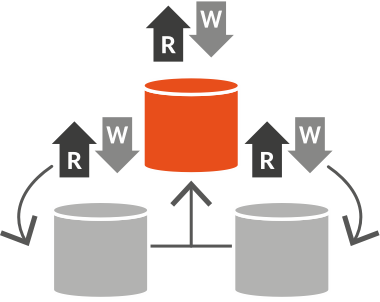4 Common Master Data Management Implementation Styles
- by 7wData

What the foundation of your Master Data Management (MDM) system is built on will depend on the implementation style you agree gives you the best chance of project success. And this will largely be determined by your business situation when it comes to data management.
There are a few different implementation styles to choose from with the main differences being whether you control your data from a central hub or synchronise the hub with your existing data sources.
But why is it essential to give careful consideration to the style of implementation?
Maintaining a single version of the truth across your Organization is a high priority for most organizations – alongside meeting compliance and regulatory obligations. Focus is placed on improving data quality, establishing guidelines for data governance and ensuring data can be easily managed and accessed across the business.
Each of these factors can be achieved by using most common implementation styles. However, Master Data Management systems vary widely between organizations, and your type of deployment will depend on your core business, corporate structure and company goals.
Your MDM solution provider will be able to advise you on the best approach depending on your business needs. Here we take a look at four common Master Data Management implementation styles to help you decide which one most closely matches your organizational requirements.
First, we’ll take a look at the Registry style, which is mainly used to spot duplicates by running cleansing and matching algorithms on data from your various source systems. It assigns unique global identifiers to matched records to help identify a single version of the truth.
This style doesn’t send data back to the source systems, so changes to master data continue to be made through existing source systems. Instead, it cleans and matches the identifying cross-referenced Information and assumes the source system can manage the quality of its own data.
Information needed to match and provide the link between corresponding records is stored, and a view of this data can be accessed as required.
When a single, comprehensive view of a customer is needed, it uses each reference system to build a 360-degree view in real-time. However, central governance of the data is required to ensure the golden record is reliable.
If you have a large number of source systems spread across the world, it can be difficult to establish an authoritative source. A Registry style approach can be used to analyze the data while avoiding the risk of overwriting information in the source systems. This will help you avoid potential compliance failure or other regulatory repercussions (which may vary from country to country) that could occur if source data is changed.
Registry Style provides a read-only view of data without modifying master data and is a useful way to remove duplications and gain consistent access to your master data.
It offers low-cost, rapid data integration with the benefit of minimal intrusion into your application systems.
Next, let’s look at the Consolidation style. With a Consolidation style, the master data is generally consolidated from multiple sources in the hub to create a single version of truth, otherwise known as the golden record. A golden record is stored in the central hub and used for reporting and reference. However, any updates made to the master data are then applied to the original sources.
[Social9_Share class=”s9-widget-wrapper”]
Upcoming Events
From Text to Value: Pairing Text Analytics and Generative AI
21 May 2024
5 PM CET – 6 PM CET
Read MoreYou Might Be Interested In
How ‘AIOps’ is optimizing cloud computing up and down the stack
2 Aug, 2018Artificial intelligence workloads are consuming ever greater shares of information technology infrastructure resources. AI is also taking up residence as …
Are You Ready for a Chief Data Officer (CDO)?
27 Jun, 2017Over the past few years, the broader conversation around data has shifted from the big data hype to business decision-makers …
7 Ways To Leverage Your Small Business Data For Enhanced Revenues
2 Apr, 2017In today’s tech-driven and a customer-centric world, using big data is pretty much a requirement. However, only just 48 percent …
Recent Jobs
Do You Want to Share Your Story?
Bring your insights on Data, Visualization, Innovation or Business Agility to our community. Let them learn from your experience.
Privacy Overview
Get the 3 STEPS
To Drive Analytics Adoption
And manage change


